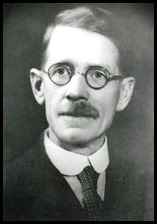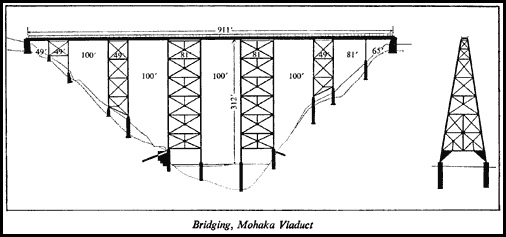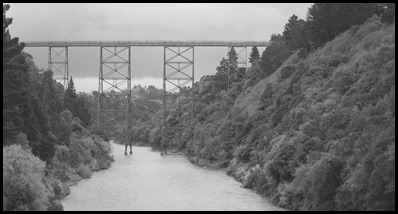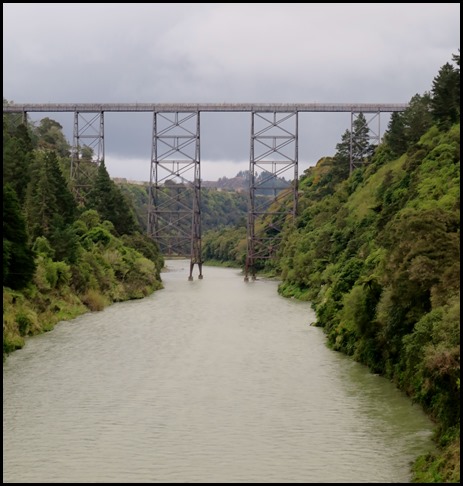Mohaka Viaduct

|
The
Mohaka Viaduct
 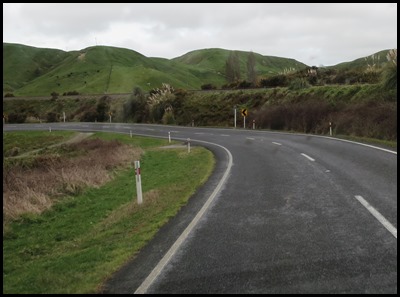 We had left Napier behind and journeyed about an
hour and a half at a very sedate Mabel pace. The scenery was
pretty but not exceptional. The rain was making for a
very dull road and then we saw a railway line to our right. It is so very
true, especially on our road trip to use the words “you never know what’s around
the next corner.” In this case an engineering marvel.
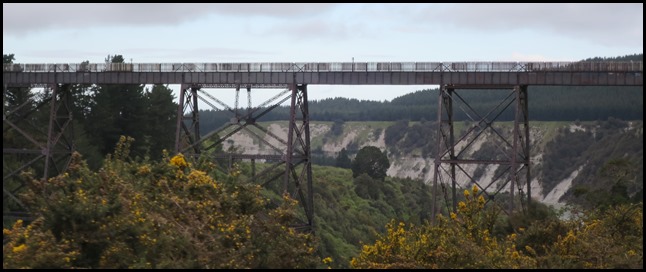 The Mohaka
Viaduct is a railway viaduct spanning the Mohaka
River in northern Hawke’s
Bay, on the East Coast of the North
Island of New
Zealand, near the small settlement
of Raupunga. It was built
between 1930 and 1937 by the Public Works
Department (PWD) for the New Zealand
Railways Department (NZR). It is nine hundred and eight
feet in length, and at three hundred and twelve feet, is the tallest viaduct
in Australasia.
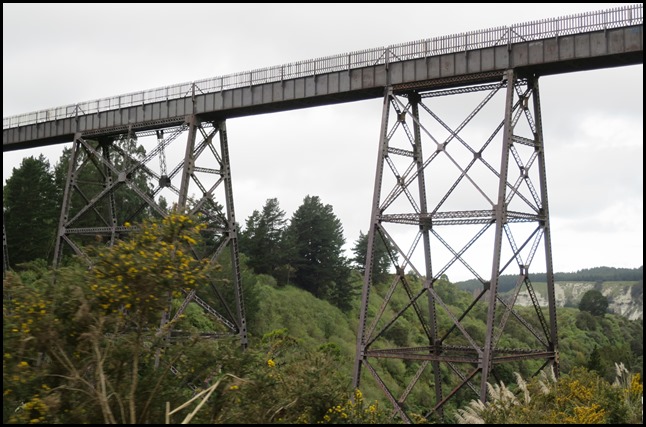 Nearer. Always hoping for the
next photograph to be a better one as we drive along.
 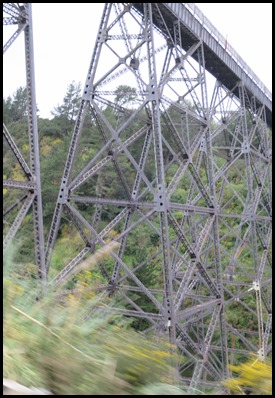 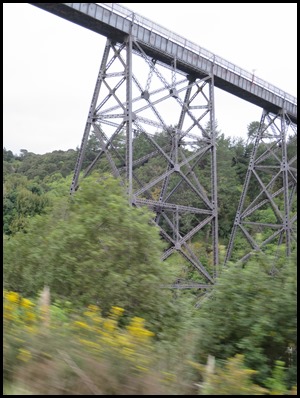 Before, under and beyond,
ooooooh.
 Then gone, hopefully the road will snake left and we will see it from the
bridge, fingers crossed.
 We did a chance to look at the river
levels at various times.
Construction of the railway line from Palmerston North to Gisborne line began in 1872, connecting Palmerston North with Napier in 1891. The northern portion from Napier to Wairoa, and thence to Gisborne followed much later, being built between 1912 to 1942. The section of line between Napier and Wairoa passed through difficult country, requiring heavy earthworks, five tunnels, five high steel viaducts to cross deep gorges, and numerous other bridges. Progress was slow, with portions of the line being progressively opened as sections were completed and handed over to the Railways Department. After completion of the line from Wairoa to the viaduct site in late 1930, the pre-fabricated steel work was railed from the small port of Waikokopu, about twenty five miles east of Wairoa. A start was made with the driving of test piles, and the digging of sixty to seventy feet deep foundations in the river bed, enabled by the use of pressurised caissons. However, the Government of the day faced major financial problems following the 1929 stock market crash in the USA, and the onset of what would become the Great Depression of the 1930’s. To cut costs work was suspended on most of the line, although foundation work continued at the Mohaka viaduct. Then on the 3rd of February 1931 the Hawke’s Bay earthquake caused an enormous amount of damage to both the line and the associated works. This, combined with ongoing financial difficulties, caused the eventual abandonment of work all along the line, although the Mohaka viaduct foundations were finished before work stopped. The works lay idle until restarted in 1936, after a change in Government and some degree of recovery from the Depression. Preparatory work on completing the viaduct started in June 1936, and the completed viaduct was formally opened by the Minister of Public Works Bob Semple on the 1st of July 1937. When catastrophic floods in April 1938 washed away part of the low-level road bridge the viaduct was pressed into temporary service for road traffic, before regular trains were using it.
Design: The viaduct was designed by John Lelliot Cull and William Langston Newnham, both of whom worked in the PWD head office. It is built of mild steel components, which were prefabricated at the Public Works Department Workshops at Mount Maunganui, near Tauranga, shipped to Waikokopu, and railed to the construction site. The steelwork was erected using a cable-way across the gorge to place the material, with the actual erection taking seven months.
Mohaka Viaduct profile.
All told the viaduct incorporates 1,824.7 tonnes (1,795.9 long tons; 2,011.4 short tons) of steel, held together by about four hundred and fifty thousand rivets, or a massive Meccano set. On completion the Mohaka viaduct was the fourth highest in the world at three hundred and twelve feet or ninety five metres in new money..........., and remains the highest viaduct in Australasia. There are twelve plate girder through spans – four spans of fifty feet, one of sixty five feet, three of eighty one feet, and four one hundred feet – supported on six trestle piers.
The Viaduct in the 1930’s and today.
Current Status: This item of New Zealand’s engineering heritage was recognised as part of the Institution of Professional Engineers New Zealand (IPENZ) “Engineering to 1990” project which the Institution organised to help celebrate New Zealand’s 150th anniversary in 1990. A plaque was unveiled to mark the significance of this railway viaduct as part of the development of the nation. The viaduct has been registered by the New Zealand Historic Places Trust as a Category 1 historic place (Register no.4418) Following severe storm damage between Wairoa and Gisborne, and doubts about financial viability of the line, the northern portion of the line from Napier - Gisborne was reviewed as part of Kiwirail’s turn-around plan, and was effectively mothballed north of Wairoa in early 2012. Later, on the 2nd of October 2012 KiwiRail announced the mothballing of the entire line from Napier to Gisborne.
A dull day but we did get our picture of the viaduct from the bridge that crossed the road.
ALL IN ALL A LOVELY SURPRISE AND VERY IMPRESSIVE STUNNINGLY TALL |
